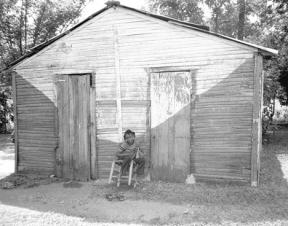School-age children in the rural Dominican Republic community of Cruz Verde have a schoolroom, some books, and a teacher. But most of them can go to school only through the fourth grade.
There are only primary schools for the 350 or so students in all seven communities in the very poor region of Yabacao.
“And that means they have no options,” said Victoria Santos, a native of the Dominican Republic who now lives on South Whidbey. The students can travel to high school in a bigger town at night, she said, over 20 miles of potholed dirt roads — or no roads — sometimes just going through sugar fields.
Or they can leave their communities for the cities, or leave the island — their home.
What all those who go away leave behind is a gradually shrinking rural population, one that without education lacks health care, public safety and work.
“There is no drugstore, no police department, no school bus in Cruz Verde,” Santos said. There are small one- or two-room houses on just two dirt streets, and there is one telephone in town. Only a few residents have indoor plumbing.
Santos is the director of South Whidbey’s Sister Island Project and its most eloquent advocate. She immigrated to the United States from Cruz Verde with her parents.
“Those who can’t emigrate are the people who try to get to the United States or Puerto Rico on illegal boats,” Santos said. “And look what happens to them — sometimes they drown, mostly they are sent back.”
Santos was instrumental in forming the Sister Island Project two years ago, and during a trip to Cruz Verde in 2000, she and a small group met with people there to talk about ways to not only interact with their “Sister Island” but to do something to help as well.
The construction of a secondary school was deemed the most critical element of an effort to revive the region’s economy and offer the options Santos says are so lacking.
“A high school will allow students to earn a diploma, prepare for the labor market or create micro-enterprises in their communities,” she wrote in a report.
Now, after working with the Fundacion Cruz Verde, a Yabacao community organization, the Sister Island Project has committed itself to focusing its efforts on the ambitious goal of creating a learning center and secondary school for the area.
It will involve fund-raising, grantwriting and other ways to acquire the money, but it also entails direct involvement with the communities and their people. Part of that interaction took place in June when a new group of SIP volunteers — which included some of the originals — traveled again to the Dominican Republic.
“This was a more diverse group,” Santos said. “Some were still from South Whidbey, but there were also people from Kansas, San Francisco, Chicago, New York and even Barbados.” Returning islanders were Maria Zontine of Clinton and Santos; new travelers from South Whidbey were Bane Sanstad and James Simon, both 13, and Christine Carosi, 18.
The 11 good will ambassadors brought with them art supplies, sports equipment, card games, paper, pens, paper, even clothing.
“We each took one suitcase for ourselves and one filled with donations,” Santos said.
Once there, the Sister Island Project volunteers got down to work — in various individual projects from teaching and painting to road repair — and in a group setting where 90 children and young adults came to a four-day camp to take part in art-based activities, learning a bit of English and getting a meal — a meaningful supplement for a poor family, noted Peter Blaustein, SIP’s development director.
“Donations from people here on Whidbey made it possible for us to offer the food,” Blaustein said.
Volunteers also shared in many village activities: horseback riding, children’s games, church services.
“The volunteers formed strong connections with the Dominicans and with each other,” Blaustein said.
The personal involvement was in tandem with the need to provide concrete support to relieve the intense pressure of the poverty of the region, and led to the search for land on which to build the school the SIP envisions.
Blaustein and Santos remained in the region an extra two weeks to make trips to all the local communities and meet with leaders and residents.
“It was time-consuming, a slow process,” Blaustein said. But in the end, an 81/2-acre piece was found in Chucho Salas, a village neighboring Cruz Verde. The land is centrally located and secluded for safety. It also has diverse natural elements such as a wetland and mango and coconut trees.
“The school can teach rural skills and health and nutritional classes so the students can stay in the region,” Santos said. There will be four classrooms, workshop areas for woodworking, machinery and computers; two bathrooms, a kitchen, lunchroom and library.
“Students will be able to learn baking and cooking, too,” Santos said.
Now returned home, the SIP members will begin the process of working with an architect and with the Dominican Ministry of Education about providing teachers and planning the curriculum.
And, of course, they will begin fund-raising.
The cost of the project is estimated at $200,000; this includes all volunteer labor. A down payment of $3,300 has been made on the land, and a total of $40,000 will finish the land purchase — including 4 1/2 acres for preservation — and fund the start of construction.
“That’s our short term goal, which we hope to reach by February,” Santos said. “That’s when they can start to build the bricks (out of sand and dirt) for the school’s foundation.


